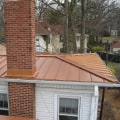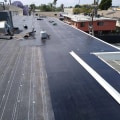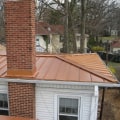Homeowners must consider both design and practicalities when deciding between a sloped roof or a flat roof. In general, however, flat roofs are more appropriate for areas that receive little rainfall, and sloped roofs are more suitable for wetter climates due to their ability to withstand moisture damage. Some homeowners choose flat roofs because Energy Star considers them to be more energy efficient. The Department of Energy classifies flat roofs as cold roofs, which have the highest potential for reflective surface area.
Flat roofs are also friendlier to solar panels because the panels can be positioned so that they provide more direct sunlight than sloped roofs. Flat roofs are among the most controversial of all types of roofs for buildings and homes. They are most commonly used in outbuildings and large structures. Flat roofs have a unique set of challenges and needs. If you are planning to have a flat roof in a residence or building, it is essential to know the advantages and disadvantages of the flat roof.
The biggest advantage of a flat roof is the expense. From construction and installation to materials commonly used for flat roofs, they are relatively cheap. Flat roof insulation board costs approximately 80 cents per foot. A flat roof also makes the interior space more versatile. Top floor apartments and finished attics are possible without the sloped walls produced by traditional sloped ceilings.
In homes that need maximum interior space, flat roofs are a significant advantage. Flat roofs are often more accessible than sloped roofs. It's easier to climb on them to inspect them. Care and caution must be taken every time a person climbs onto a roof.
Flat roofs are easier to check and much safer. Flat roofs are substantially more stable than sloped roofs when the building is small. In the right environment, they are economical as long as they are properly maintained. Because flat roofs are faster to install, the wait to move is shorter. If repairs or replacements are needed in the future, reroofing is relatively simple and quick.
Life expectancy is between ten and 15 years. There are rubber shingles that can be installed together with rolled rubber roofs. Some new materials are available, such as PVC and polycarbonate roofs. Because they are recently developed products, there is no information on how long they will last. The TPO is an excellent roofing system for warm climates. TPO roofing systems are an example of the improvements to flat roofs being explored.
The seams of TPO ceilings are welded instead of glued together. They are less likely to separate when heated. A pitched roof is better than a flat roof because it will drain water much more effectively. That's because this roof is better at keeping water out, making it less likely to leak and damage your home. On the other hand, flat roofs are more sensitive to people moving over them, so if you plan to hang out on the roof, you can create a lot of noise for anyone inside your house.
While sloped roofs still need to be inspected regularly, they tend to have fewer structural problems than flat roofs. Maintenance requires flat roof repair contractors to address shrinkage caused by prolonged exposure to UV rays. The most common type used for residential flat roofs is EPDM (ethylene propylene diene monomer), a synthetic rubber sheet material that is also commonly used as pond liners. Since sloped roofs are more common than flat roofs, you can probably imagine that there are a lot of reasons why many home and business owners choose them. However, the maintenance of a flat roof will increase over the life of the home, which you should consider when calculating your expenses. Whether you're building a new home or doing a major overhaul of your current home's roof, both flat and pitched roofs have their pros and cons. You should hire a local roofer to install your roof, as a self-made roof installation carries several risks, from damaging the structure to harming yourself.
Materials, sealants, waterproofing and water management are important decisions for your roof, so contact the commercial roofing experts at Able Roof to discuss your roof concerns. Installing elements such as solar panels, which save electricity, and satellites, makes repairs and cleaning of gutters less expensive and easier to carry out on flat roofs. While a flat roof offers a more affordable initial cost and can provide the aesthetic that many home and business owners are looking for, it's not always the most practical option. Industrial buildings and businesses that have flat roofs have to compensate for the weight inside. While recessed ceilings are still used in some commercial applications, they are not a common type of roof for homes, mainly because of their weight and thickness, as well as the strong odors and dirt they create during installation. Even if you don't choose to make your flat roof “green”, you can use the space as a patio area, depending on the materials it's built from. Flat and pitched roofs have their advantages and disadvantages, so consider your options and the long-term costs of both.



